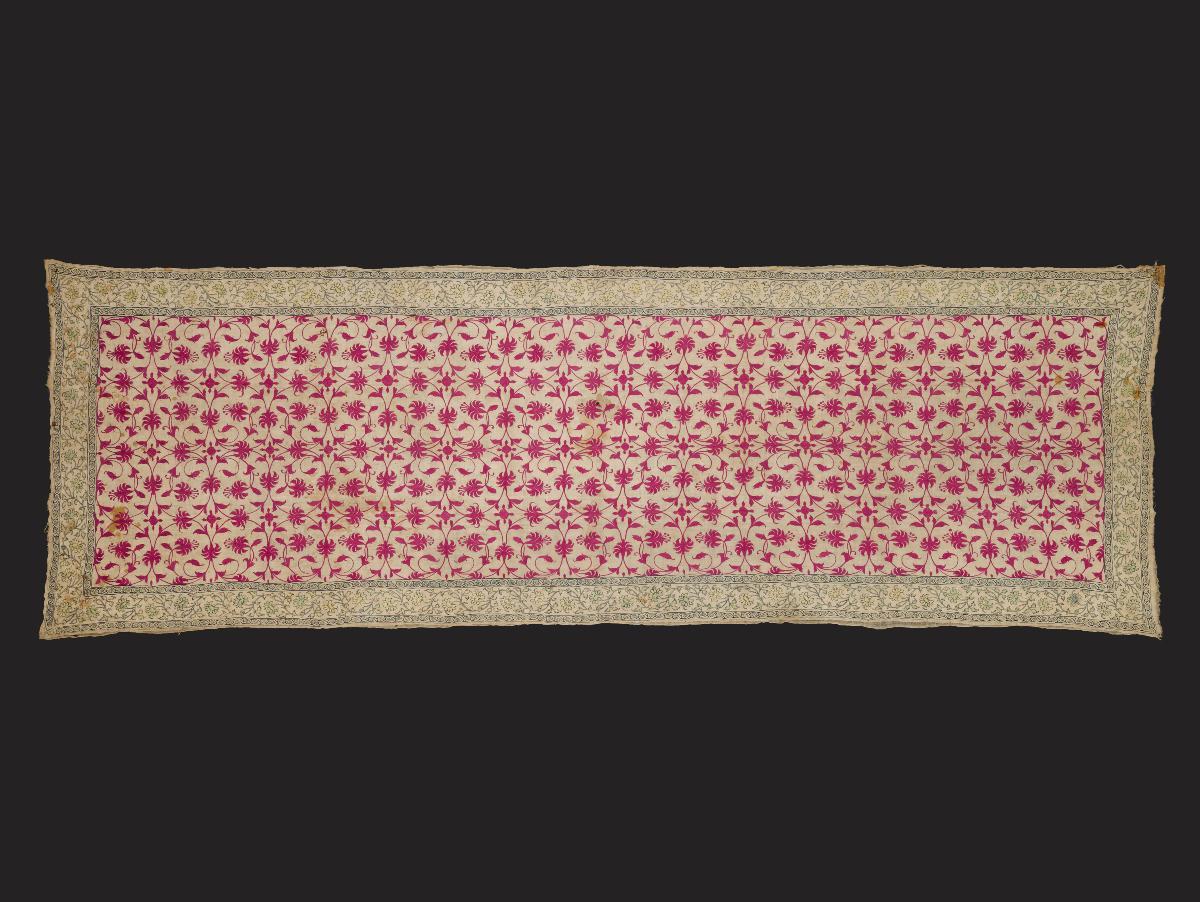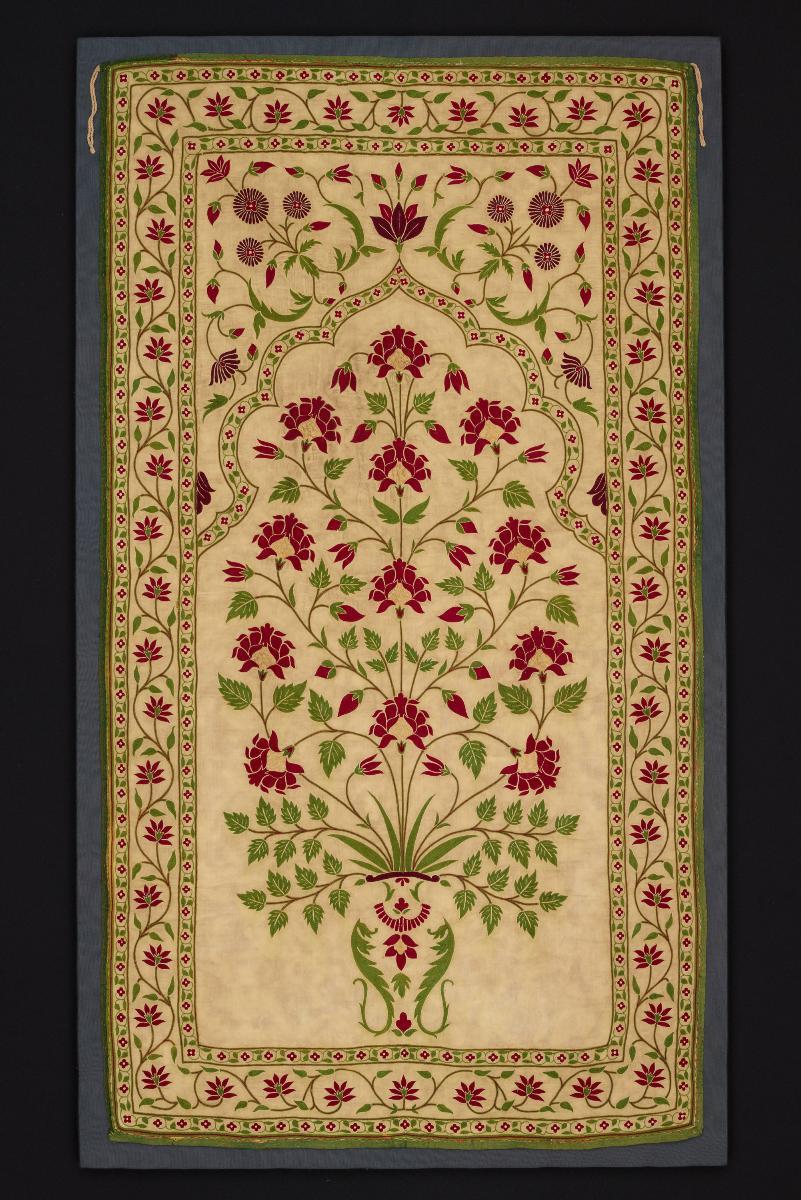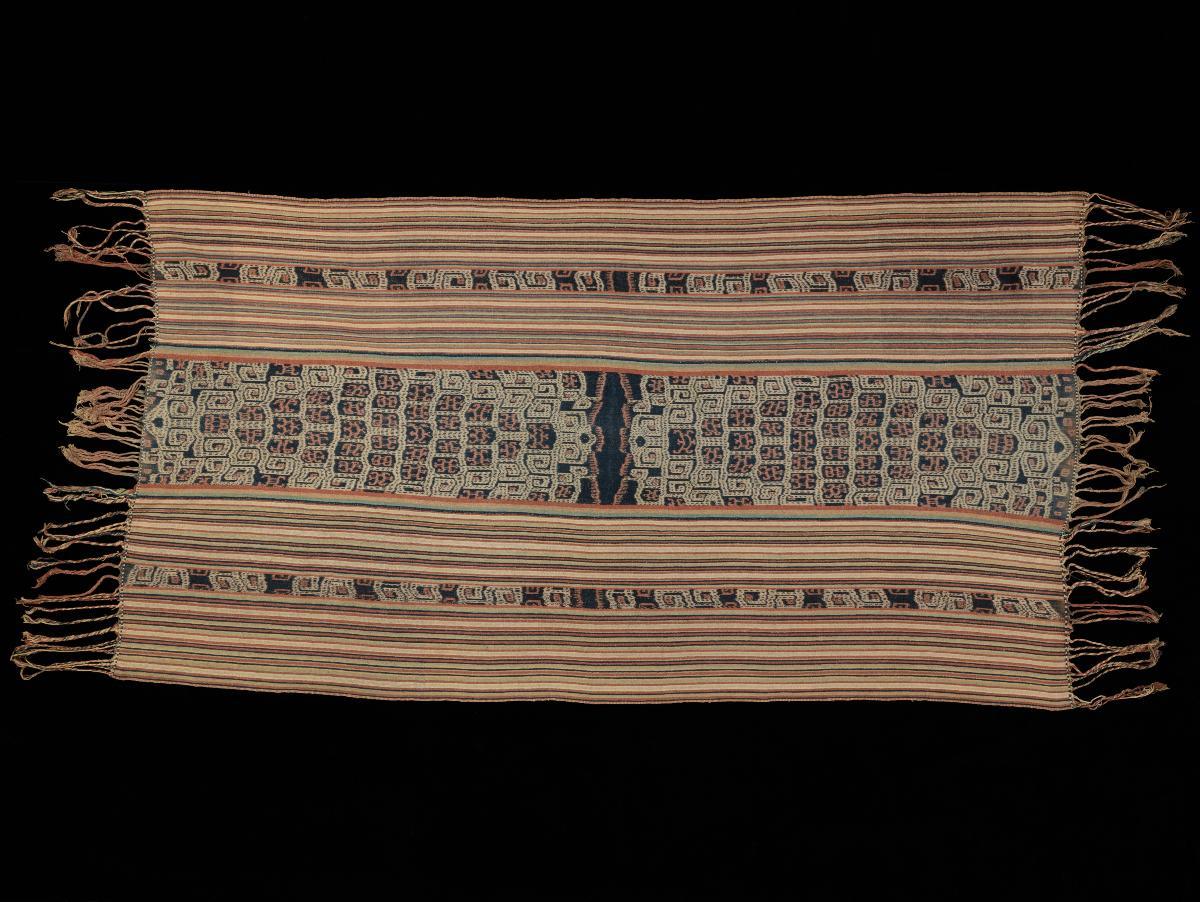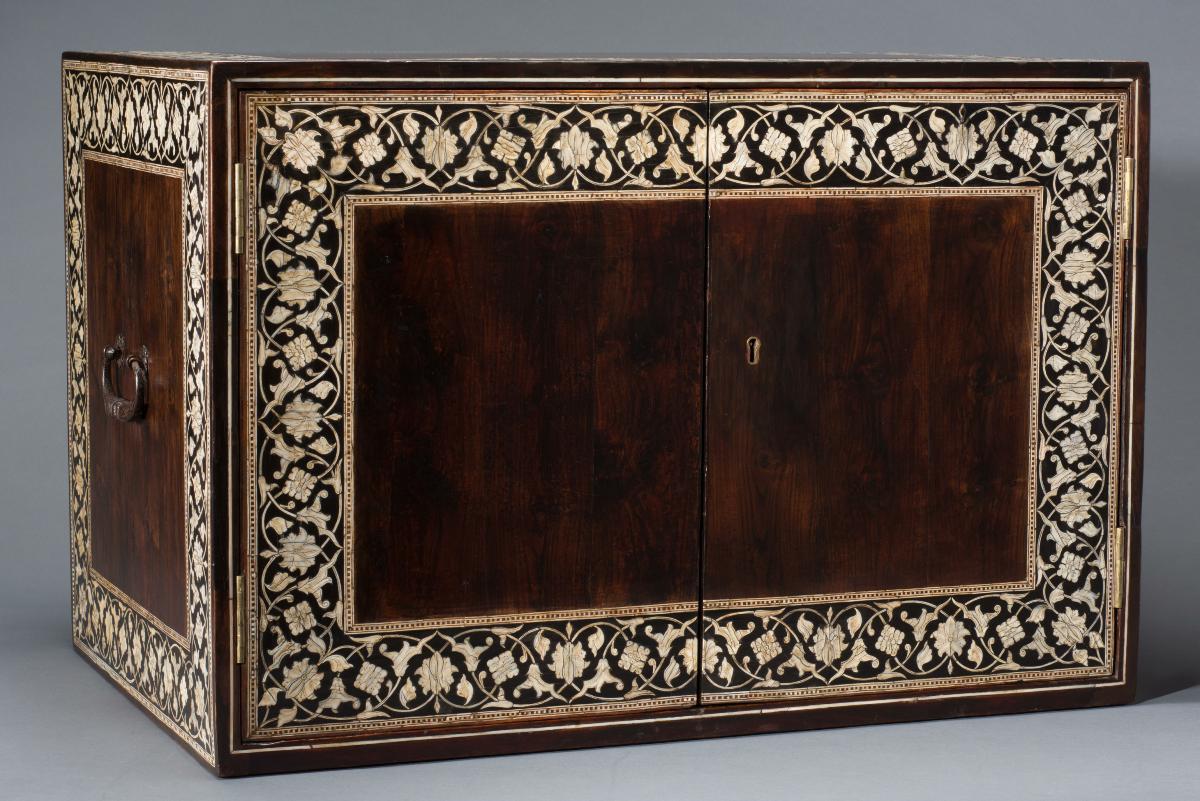This quilted cotton summer carpet has with very fine silk embroidery. It is a typical example of needlework with ‘chain stitching’ produced during the Mughal period (15th-17th centuries). Unlike the typical Persian style, there is no cartouche in the centre, suggesting a localised style and patronage. The carpet is covered with crimson-coloured flowers, leaves and tendrils intertwining in an all over pattern. A meandering creeper in yellow and blue forms the border. The Imperial Mughal embroidered summer carpets also tend to have more realistic renderings, with a detailed use of colour in the embroidery of flowering plants. This piece comes Gujarat, Northwest India, a well-known centre for needlework besides Lahore, Agra, and Fatehpur.















